IT WAS NO SECRET THAT the previous Kia Niro whilst a good EV in its own right, has been on the market overseas for some years, so it was battling for a place in the Australian market with one hand tied behind its back.
The new model is bang up to the minute and looks set to change yet more minds about electric vehicles.
The all-new Kia Niro is now in Kia dealerships, providing Australian car buyers with a bold, cutting-edge, small SUV to add to their list of considerations.
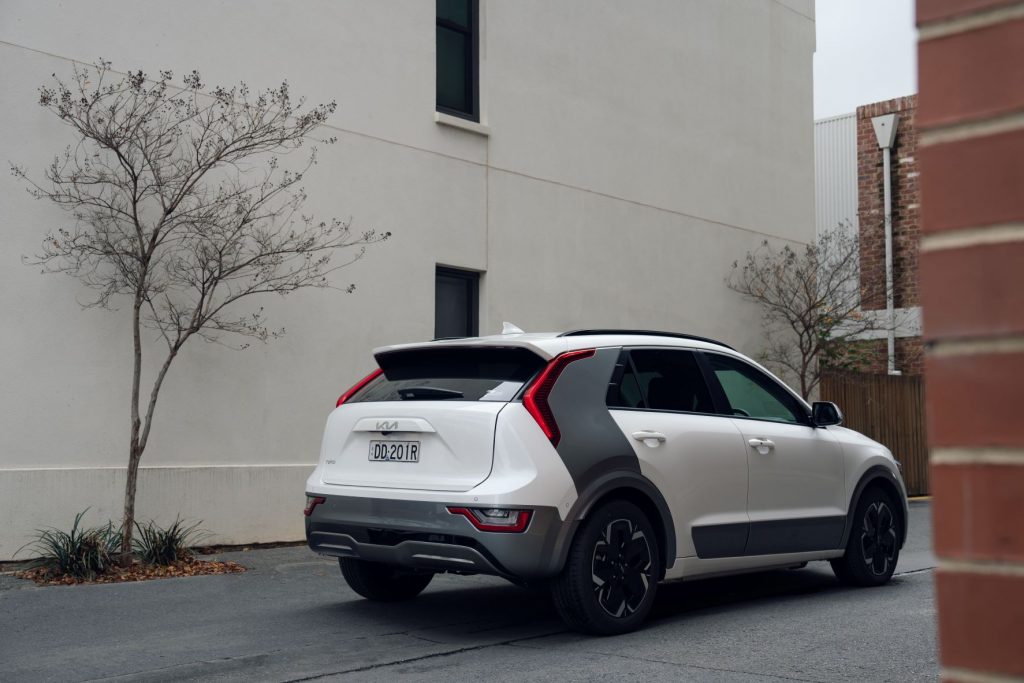
Available in two highly efficient FWD electrified powertrains, Hybrid Electric (HEV) and full Electric (EV), the next-generation Niro has been designed from the ground up to meet the complex and varied needs of today’s customers wanting a high tech and advanced small SUV.
“This is an exciting time for the Kia brand and particularly for the team at Kia Australia,” said Kia’s Chief Operating Officer, Damien Meredith.
“We have recently reached a significant milestone in selling our 750,000th car locally, the evolution of the brand is being recognised by Australian car buyers, interest is strong and demand is high, even with the supply limitations being faced by the industry.
“We are very pleased with the design, features, technology and eco credentials of the all-New Niro range and it might just take Australian new car buyers by surprise.”
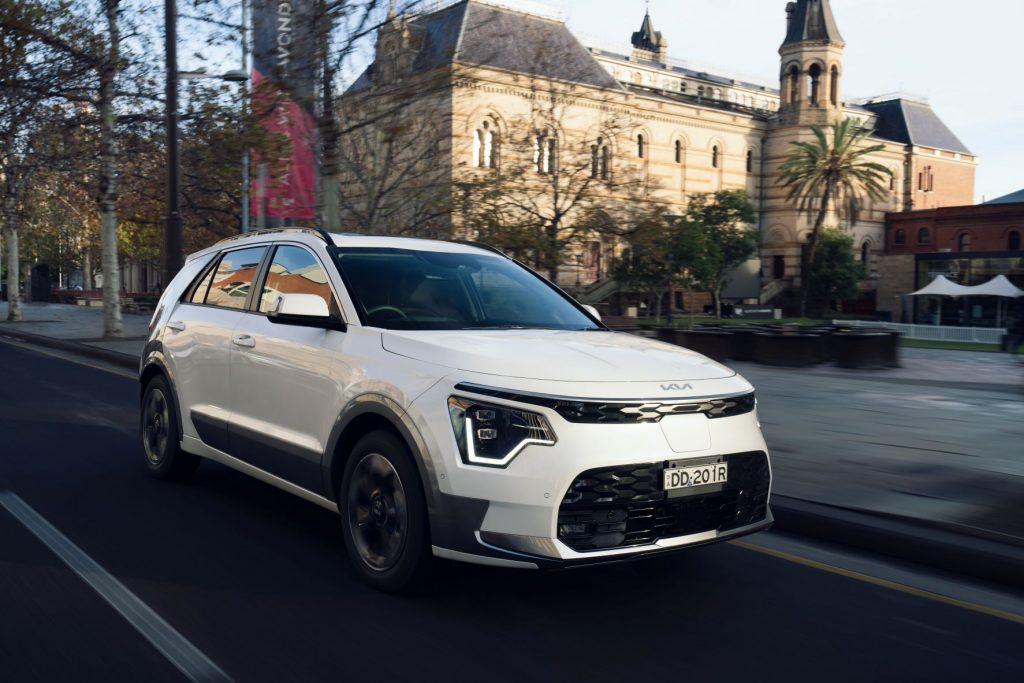
Bold and stylish design
The all-new Kia Niro features a bold and dynamic design inspired by Kia’s acclaimed ‘Opposites United’ design philosophy. Taking strong influence from the 2019 HabaNiro concept car, its stylish and bold crossover looks are combined with a high-tech two-tone body and optional contrasting C-Pillar.
The all-new Niro’s front-end features the latest evolution of Kia’s signature Tiger Face (to be honest, we can see little relationship to the old dogbone grille), which extends from the bonnet to the rugged bumper below. Striking ‘heartbeat’ daytime running lights (DRLs) add to the unique yet contemporary look, while a bold skid plate and cladding enhance the car’s rugged character.
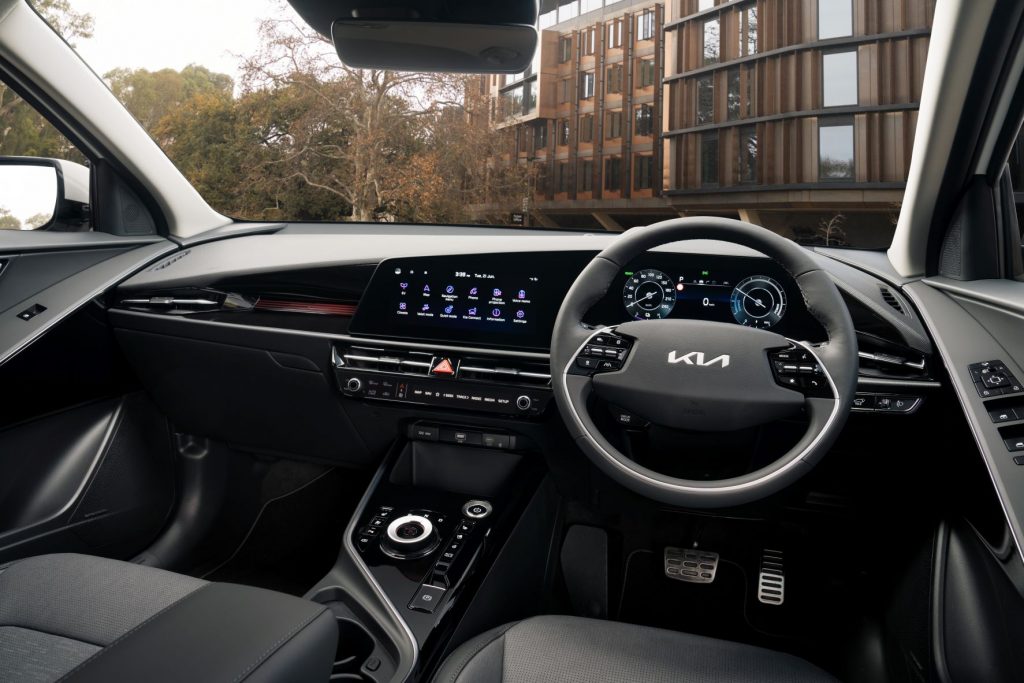
The side profile combines clean character lines with a bold Aero C-pillar, a highly distinctive shape with an aerodynamic vent helping to improve overall efficiency levels. These measures have enabled the all-new Kia Niro to achieve an impressive drag coefficient (Cd) of 0.29. The meeting of the distinctive C-pillars with the striking boomerang-shaped LED taillights further add to the vehicle’s sporty stance.
At the rear, these LED taillights sit alongside uncomplicated surface treatments for a concise and aerodynamic styling combination, while the heartbeat-shaped rear reflector, rugged skid plate and lower bumper help to complement the all-new Niro’s front-end design.
The second-generation Niro offers a choice of eight exterior colours across the range including Cityscape Green which is new to Kia’s colour pallet, Snow White Pearl, Aurora Black Pearl, Mineral Blue, Interstellar Grey, Runway Red, Steel Grey and Clear White, all sporting a gloss black lower cladding (excluding EV GT-Line in Snow White Pearl).
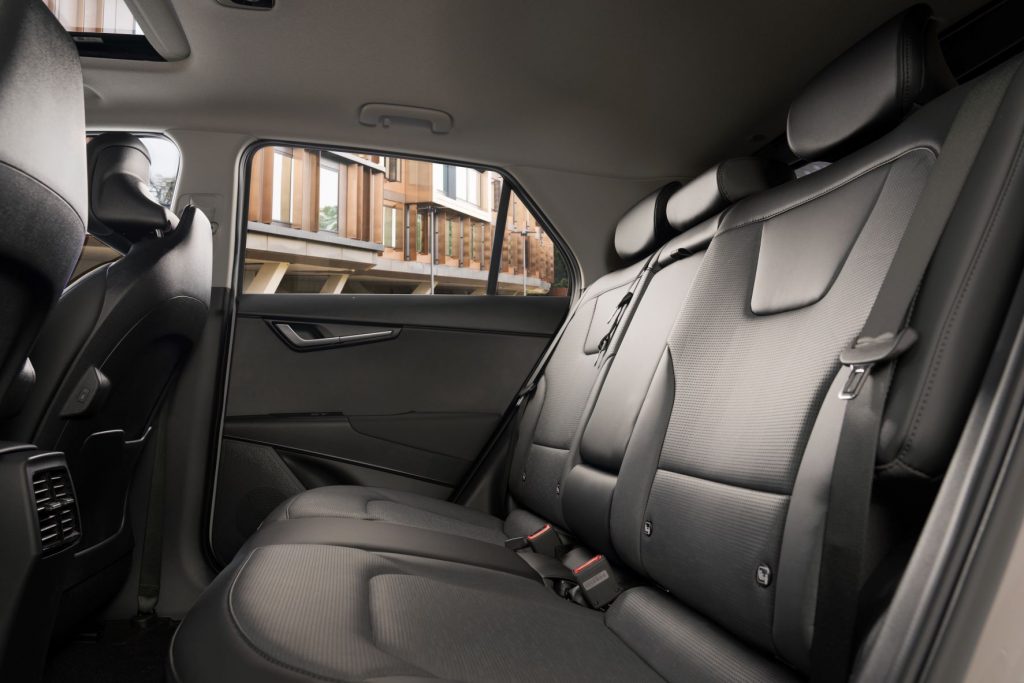
For the first time, the Niro range provides options for personalisation with a choice of contrasting C-pillar colours in the GT-Line trims; Cityscape Green and Mineral Blue can be combined with a gloss black C-pillar (HEV and EV GT-Line), while the EV GT-Line in Snow White Pearl can be paired with a C-pillar and cladding in Steel Grey.
Innovative and minimalist interior
Premium and eco-friendly materials create a minimalist contemporary feel while modern digital displays and interior controls, have been optimally placed to further enhance the user-friendly operating experience.
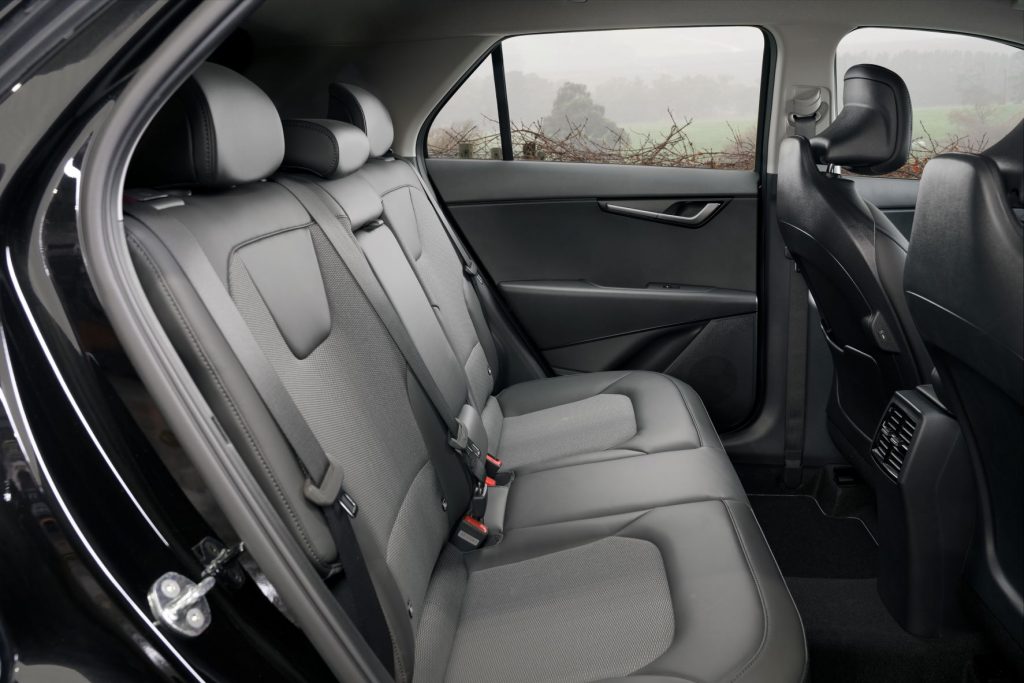
The entry HEV S comes with a 4.2-inch Multi-Function LCD cluster. The simplistic digital display has been designed to replace analogue gauges to maintain a high-tech image across the entire range. The EV S trim incorporates the 10.25-inch digital cluster with an 8-inch AV touch screen.
The GT-Line trim in both HEV and EV variants provides a high-tech panoramic high-definition digital display screen that integrates both the instrument cluster (10.25-inch) and infotainment features (+10.25-inch) in one streamlined package. The system has been designed to be easy to use with pin sharp graphics and a highly intuitive layout, enabling users to personalise, access and operate the vehicle’s connectivity, usability and functionality features with ease and confidence.
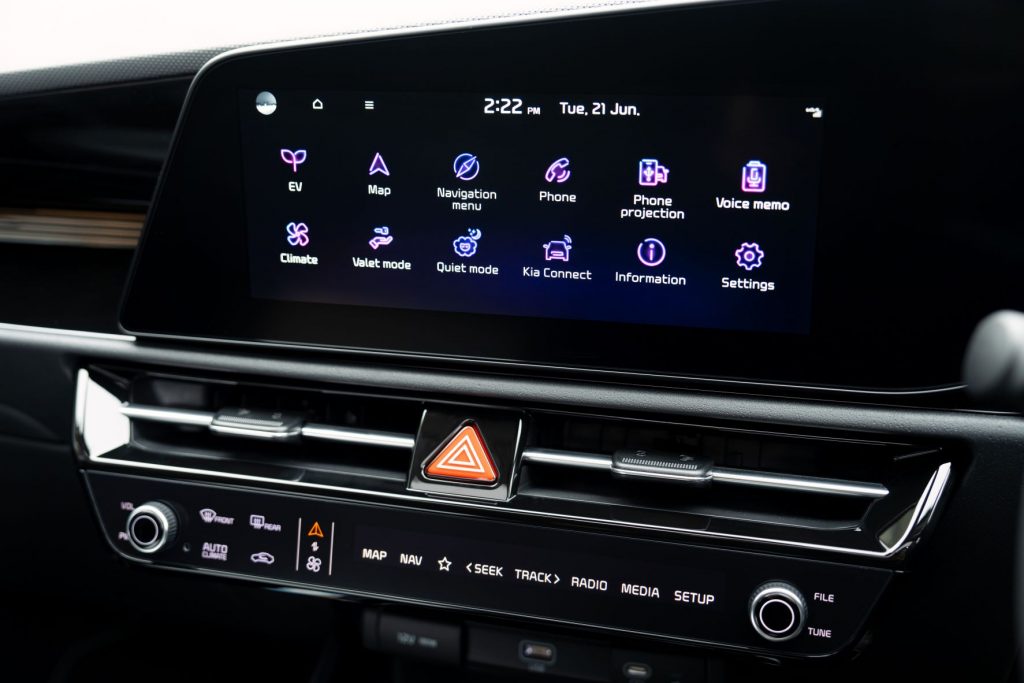
Located below the centre screen lies an integrated touch sensitive infotainment and climate control system that removes clutter for a clean and coherent look and ensures front seat occupants can access these important controls without the need to scroll through multiple menus.
Within easy reach of the driver lies the stylish centre-console incorporating a modern look with a high-gloss black surface finish. Here, the driver can operate the all-new Niro’s electronic dial-type shift lever (HEV GT-Line & EV S/GT-Line), the design of which saves space and is convenient and intuitive to operate. A variable large-capacity cupholder tray and a wireless Qi charging pad (GT-Line) are also close to hand.
The front passenger premium relaxation seat in the EV GT-Line can recline at the touch of a button while parked or charging to enable the passenger to relax in supreme comfort. Across the range, the front seats incorporate convenient rear-mounted coat hangers and USBC charging.
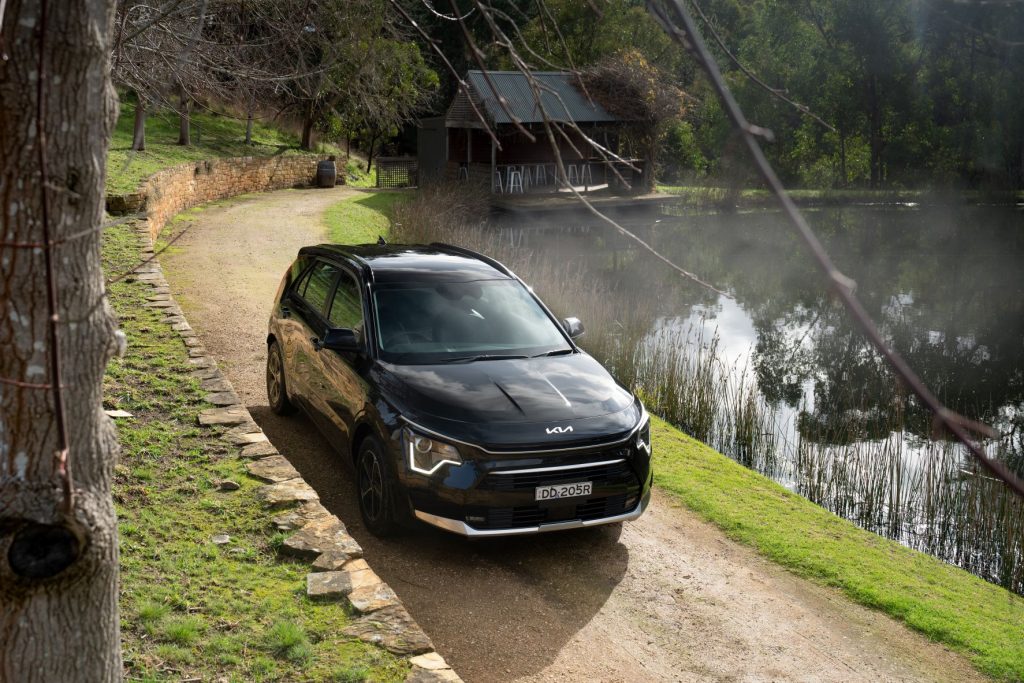
The all-new Niro’s dimensions have grown over its predecessor, with a length measuring 4420mm, a width of 1825mm, a height of 1545mm HEV/1,570mm EV, and a wheelbase of 2720mm (increased length 65mm HEV/45mm EV, width 20mm and wheelbase 20mm). Apparently, had it been one centimetre longer, it would have moved up into the next SUV category.
By repositioning the Niro’s 12V battery out of the wheelhouse and instead integrating it alongside the high-voltage battery at the bottom of the rear seats, boot load capacity for the Niro HEV model reaches an impressive 425 litres (VDA), up 15 litres over its predecessor.
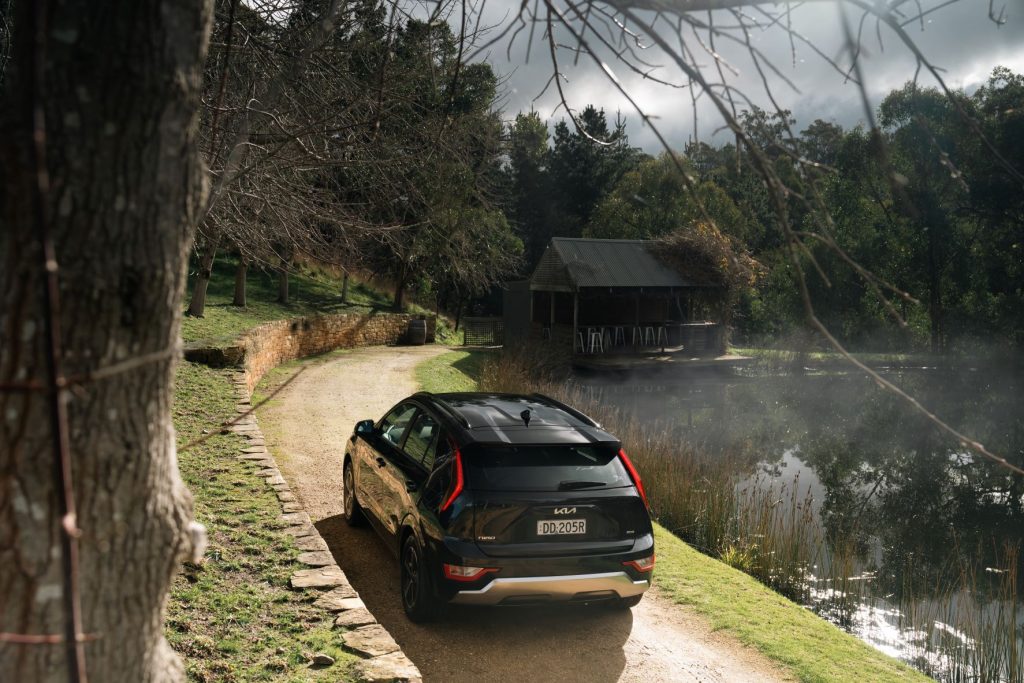
As a clear statement of Kia’s ongoing commitment to sustainability, the all-new Niro showcases recycled materials inside the cabin. The headlining is made from recycled PET materials, the seats are made from Bio PU with Tencel from eucalyptus tree fibres, and BTX-free paint is used on the door panels to minimise the impact on the environment and reduce waste.
Powertrains and local tuning deliver an efficient and energetic driving experience
The all-new Kia Niro is available with two highly efficient FWD electrified powertrains, Hybrid Electric (HEV) and full Electric (EV), and both variants are available with a choice of two specification options: the base S trim and the newly appointed flagship GT-Line trim.
A highly efficient Smartstream 1.6-litre GDI engine featuring improved cooling, friction and combustion technologies helps power the HEV models. The powerplant ensures competitive fuel efficiency, with the all-new Niro HEV capable of achieving 4.0L/100 kms combined fuel consumption.
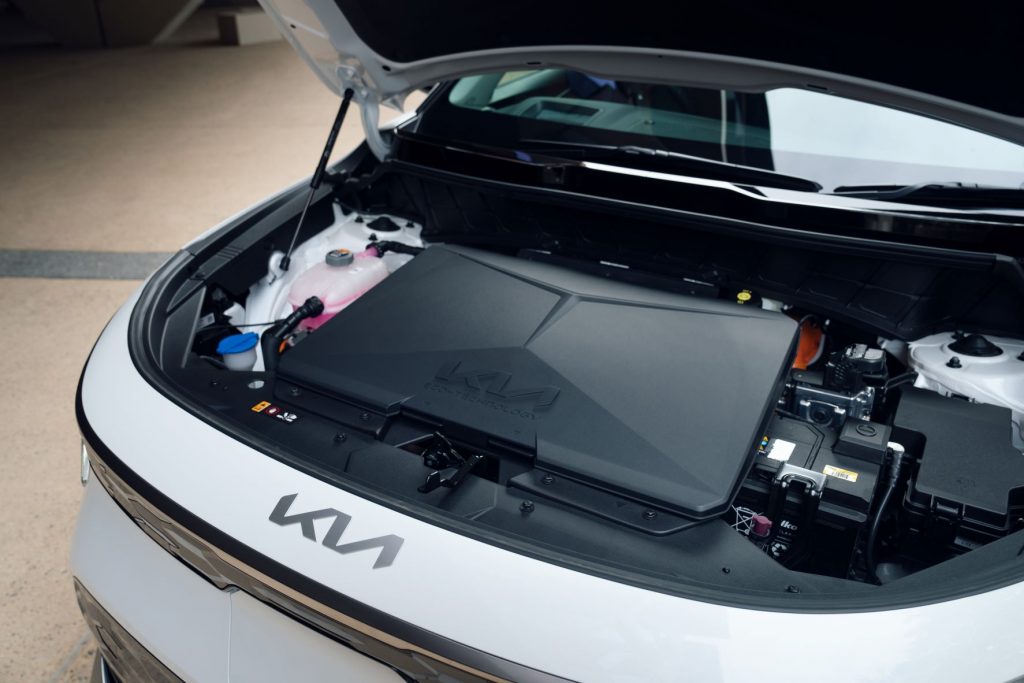
The four-cylinder unit produces a maximum output of 77.2kW along with 144Nm of torque. When combined with the 32kW permanent magnet synchronous electric motor, the HEV model produces a combined maximum power output of 104kW and 265Nm of torque.
The 1.6-litre GDI engine is mated to the second-generation 6-speed dual-clutch automatic transmission (6DCT) that has been carefully engineered and optimised to increase efficiency and reduce weight.
The 64.8kWh electric option is paired with a Single Speed Transmission (reduction gear), provides 150kW power and 255Nm of torque, and a single charge driving range of 460 kilometres.
The EV variant of the all-new Niro combines its outstanding 460km range with a top speed of 167km/h and 0-100km/h taking just 7.8 seconds. Furthermore, Niro EV’s low drag coefficient of 0.29 ensures minimum aerodynamic resistance and maximum energy efficiency.
Topping up the EV’s 64.8kWh lithium-ion polymer battery from 10-80 percent takes just 43 minutes with a suitable DC rapid charger. The all-new Niro comes with a standard CCS2 charging port for added convenience. AC and DC charging times for the all-new Niro have improved over the outgoing model.
Kia’s smart regenerative braking system enables drivers to choose from a series of regeneration levels to easily slow the car and recuperate kinetic energy to maximise driving range. The system can calculate the amount of regeneration required using radar and road gradient information. The system allows the car to harvest the maximum amount of energy from its brakes while bringing the vehicle to a gentle halt.
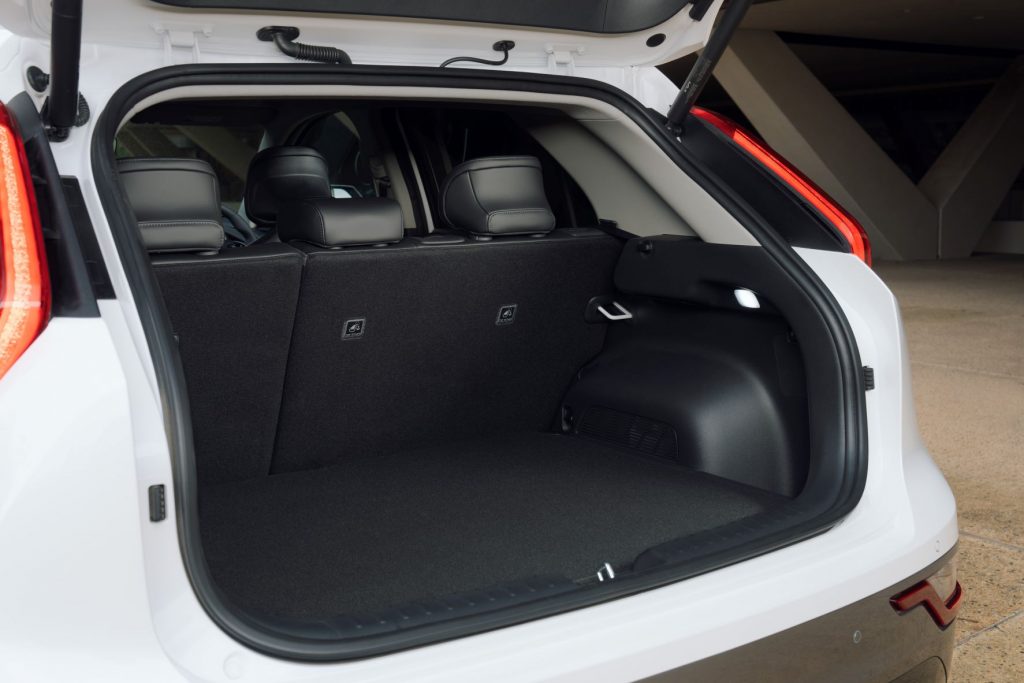
The next-generation Niro EV gains in braked towing capacity which is now 750kg (previously 300kg) opening up the possibilities for zero-emission adventures. The HEV maximum braked towing capacity remains at a capable 1300kg.
Tuned for Australian roads
The all-new Kia Niro has undergone an extensive local ride and handling program to ensure it is suitable for Australia’s unique road conditions and driving styles. This is also Kia Australia’s first full ride and handling program since the start of the pandemic with the opportunity to tune the MDPS (steering) map.
The result, is car-like handling with flat body control and minimal roll coming into corners, providing driver confidence. A significant improvement over the outgoing model and comparable to European benchmarks. (We are told the new Niro was benchmarked against the Ford Puma and Skoda Kamiq.)
Impressive safety and convenience features
Safety has been a top priority during the development of the all-new Niro. As a result, the vehicle’s high-strength lightweight body features a multi-load front impact structure to ensure passengers benefit from outstanding levels of safety in the event of a front-end collision.
The active and passive safety credentials of the all-new Kia Niro range have also been boosted over the outgoing model adding Centre Side Airbag, Multi Collision Braking (MCB), Electronic Chromic Mirror (ECM), Blind Spot Collision Avoidance Assist (BCA), Rear Cross Traffic Collision Avoidance Assist (RCCA) and Intelligent Speed Limit Assist (ISLA) as standard across all trim levels.
Other standard safety features include Lane Keeping Assist (LKA), Driver Attention Warning (DAW), High Beam Assist (HBA), Lane Following Assist (LFA), Rear View Monitor (RVM), Rear Cross-Traffic Collision-Avoidance Assist (RCCA), and Rear Parking Sensors.
GT-Line trims gain Parking Collision-Avoidance Assist Reverse (PCA-R), Safe Exit Assist, Front & Rear Parking Sensors, Power Child Lock and the Emergency Service ‘eCall’ through the Kia Connect functions.
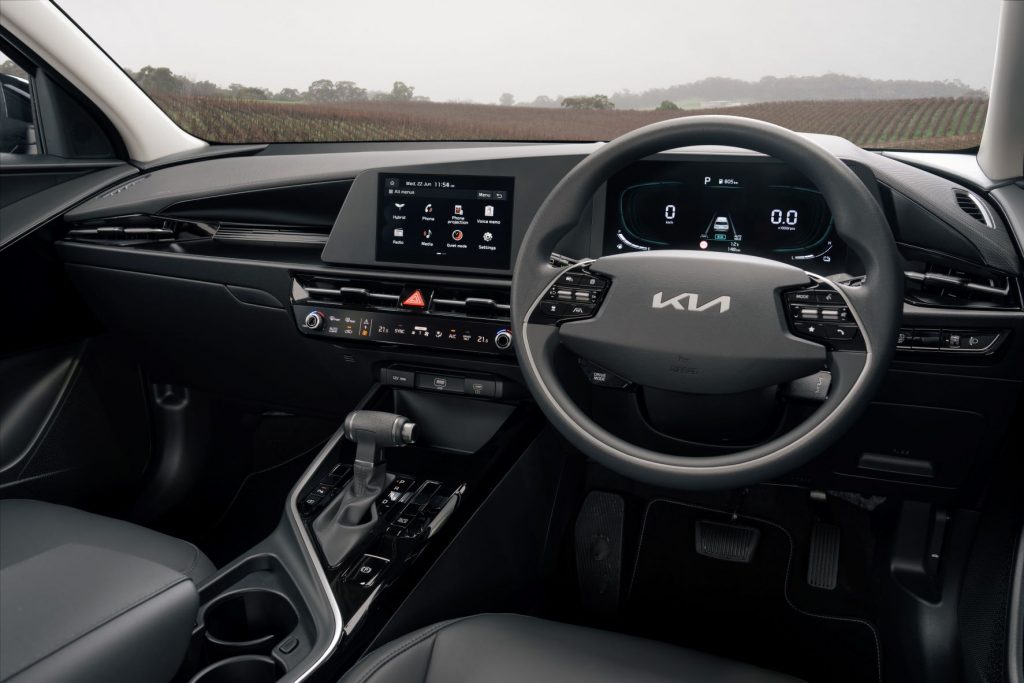
Kia Connect and convenience features fit seamlessly into everyday life
To suitably symbolise the change to GT-Line as the new top trim, both HEV and EV GT-Line variants offer an extensive list of upgraded convenience and comfort features such as Heated and Ventilated Seats (Front), Heated Steering Wheel, 10.25-inch Digital Driver Cluster, Head-Up Display (HUD), Remote Smart Parking Assist (RSPA-Entry), Smart Power Tailgate, Wireless Qi Device Charger, Telematics (Kia Connect) and Smart Key with Push Button Start.
The EV GT-Line, representing the flagship model of the range, also receives a Power Tilt and Sliding Sunroof, Front Passenger Premium Relaxation Seat, 8-speaker Harmon/Kardon Premium Sound System and Exterior Vehicle to Load Adaptor (V2L).
Interior V2L is standard across the all-new Niro EV range, a function offering significant charging flexibility. An Integrated Charging Control Unit (ICCU) enables up to 3.6kW of power to be discharged from the vehicle’s battery. Inside the cabin, a handy charging port located under the rear seats allows passengers to charge devices from the vehicle’s battery without the need for additional adapters.
GT-Line models come with both the interior and exterior V2L function. The adapter plug enables the car to charge anything from external domestic appliances to other EVs (with a trickle charger).
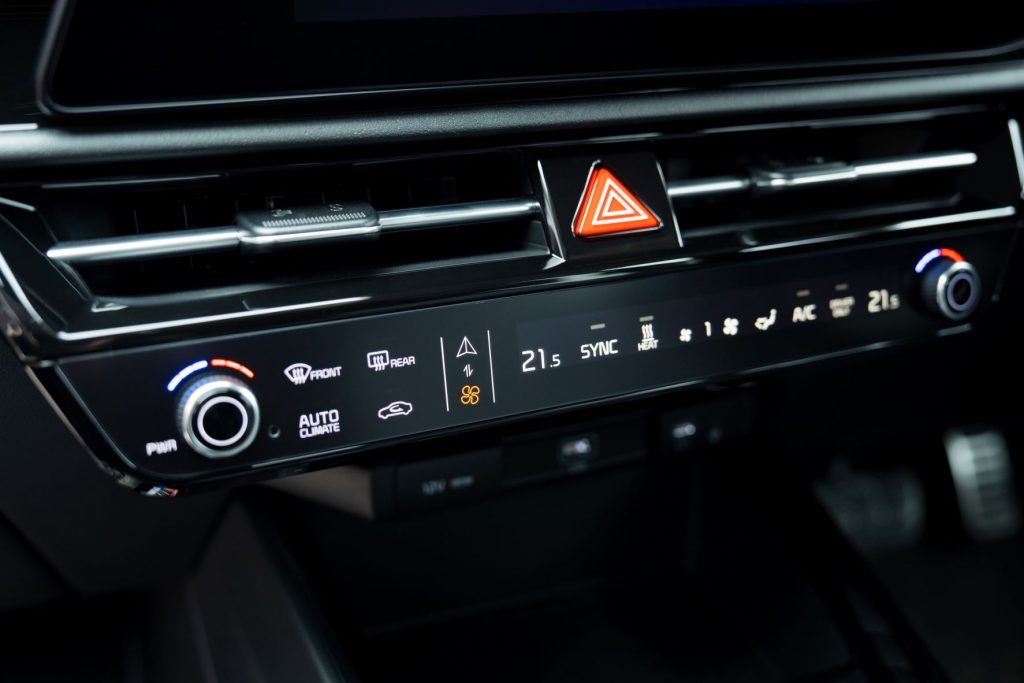
The all-new Niro includes an extensive range of high-tech features designed to make life easier both behind the wheel and away from the car, as this is the first Kia model available in Australia to offer Kia’s Connected Car Services system; Kia Connect.
Kia Connect provides customer benefits in safety and security, control, connectivity, and LIVE services by using telematics to transfer real time data such as weather and traffic information, charging station information and more.
An advanced Voice Car Control system featuring Natural Voice Recognition technology allows occupants to control key vehicle systems such as temperature and audio settings with ease.
The Kia Connect smartphone app allows users to connect with their vehicle remotely. Drivers can sync calendars, plan journeys with online navigation and access onboard features including live traffic alerts and real-time weather forecasts. Valet Mode enables customers to monitor their vehicle remotely when it is being driven by another user, providing added peace of mind.
Kia Connect is available as standard on both the HEV and EV GT-Line trims and offers features such as:
- Safety and Security
- Remote Vehicle Controls
- Live Services (Weather, Traffic)
- AI Voice Control
- Vehicle Status
- Monthly Driving Info
- Map and Location Features
- Send Destination to Car
- Scheduled Charging/Climate Control (EV)
Pricing
| Electric Type | Trim | C-Pillar | RRP |
| Hybrid | S | Body Coloured | $44,380 |
| GT-Line | Body Coloured | $50,030 | |
| Gloss Black
(available with M4B/CGE exterior colours) |
|||
| Full Electric | S | Body Coloured | $65,300 |
| GT-Line | Body Coloured | $72,100 | |
| Gloss Black
(available with M4B/CGE exterior colours) |
|||
| Steel Grey
(only available with SWP exterior colour) |
Drive impressions are under embargo, but we’ll bring you our report as soon as the embargo is lifted.
Note: The use of Remote Smart Park Assist (RSPA) feature does not comply with “The Road Traffic Code 2000” in WA and thus it should not be used while within Western Australia. (How many times must we face these inconsistencies from one State to another?)
